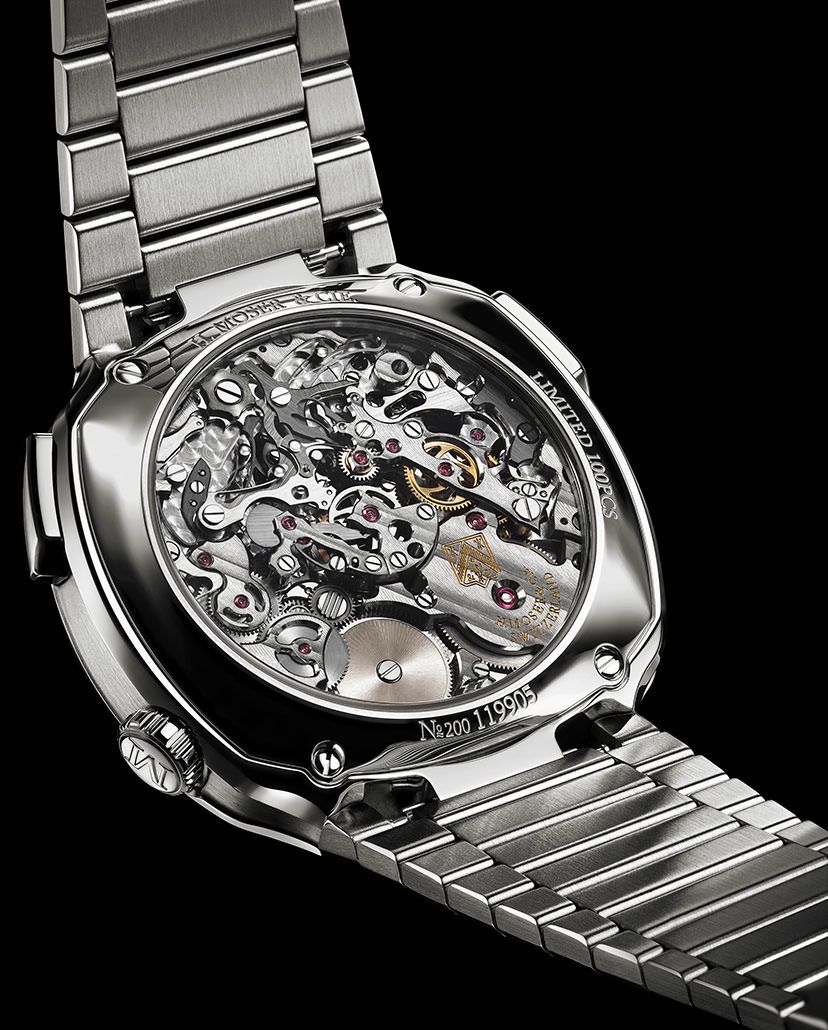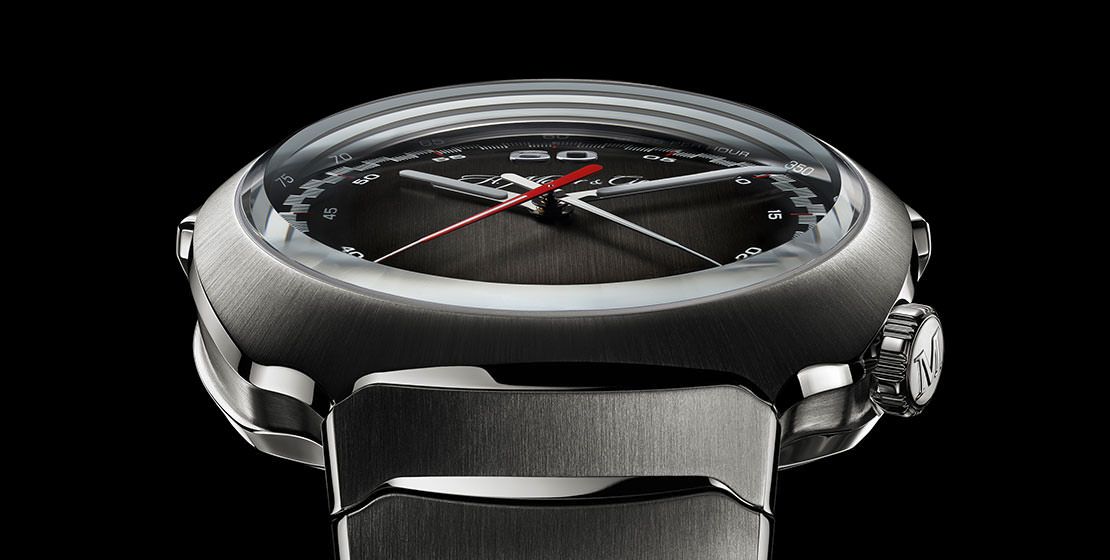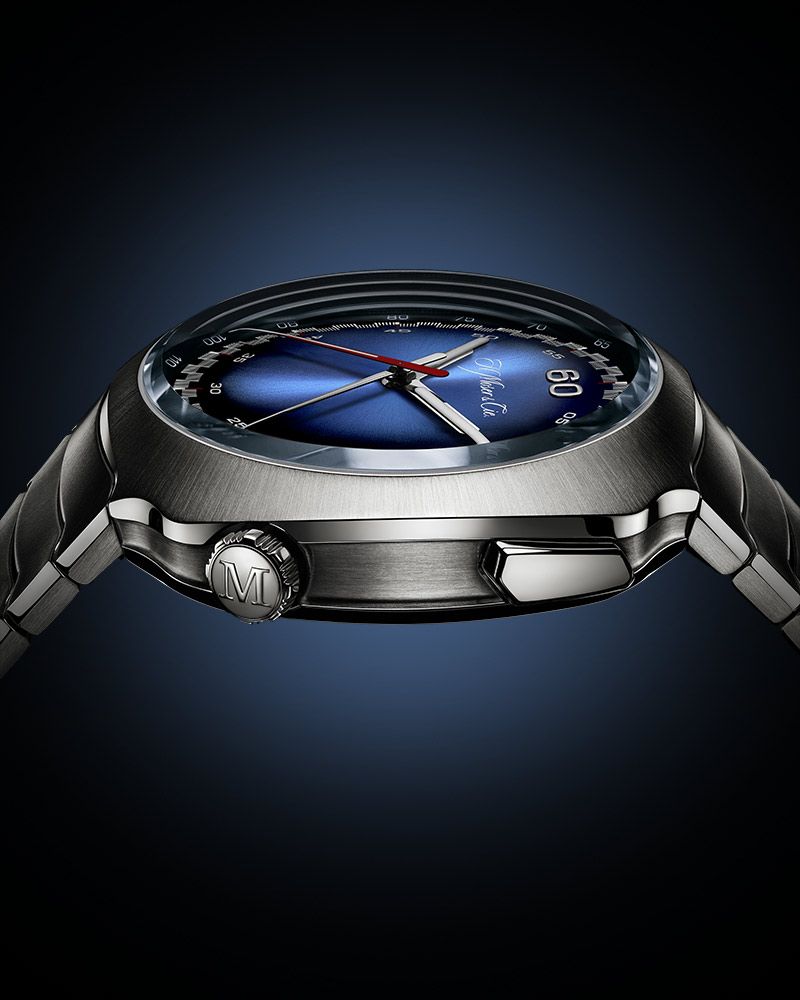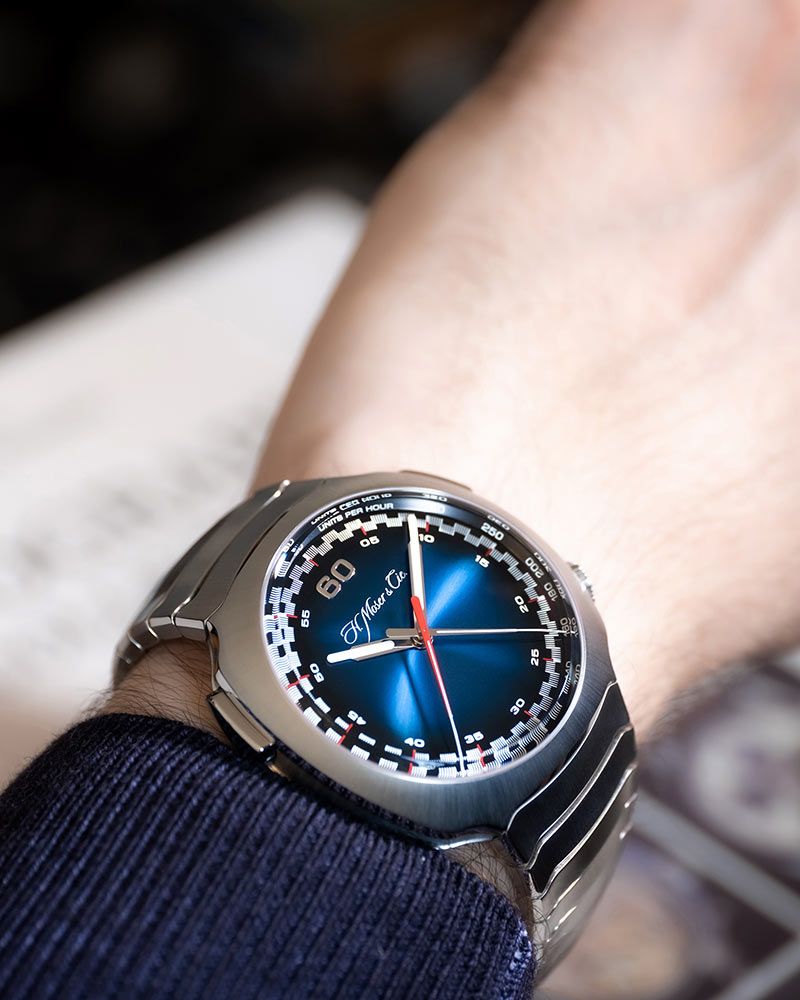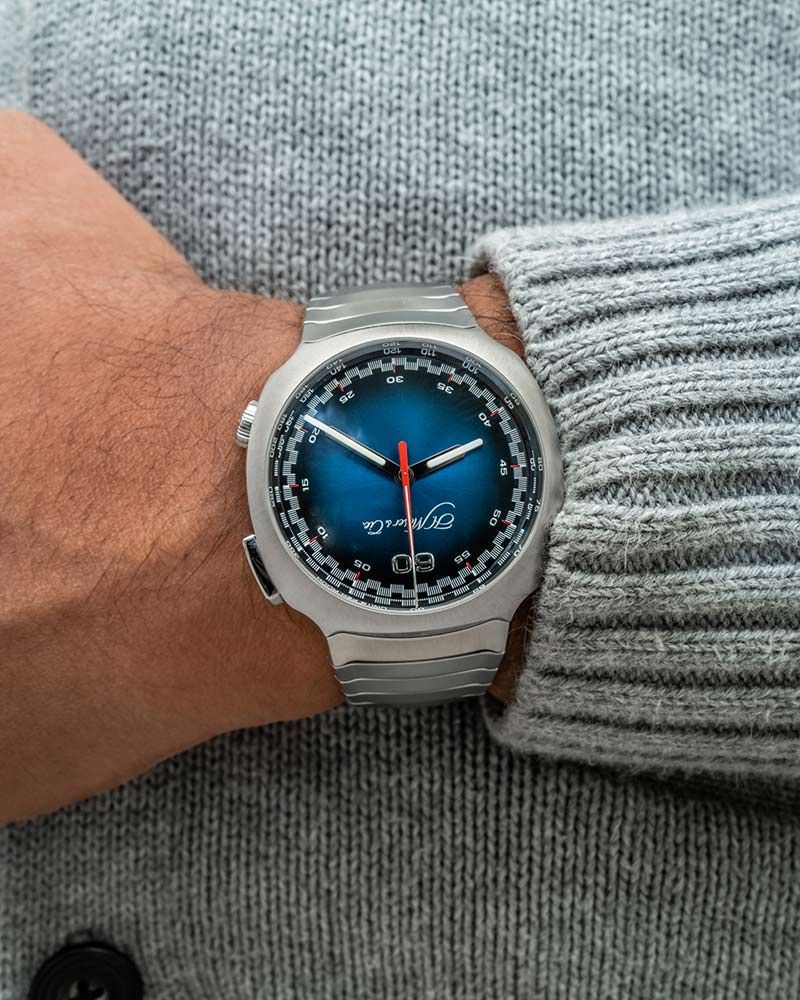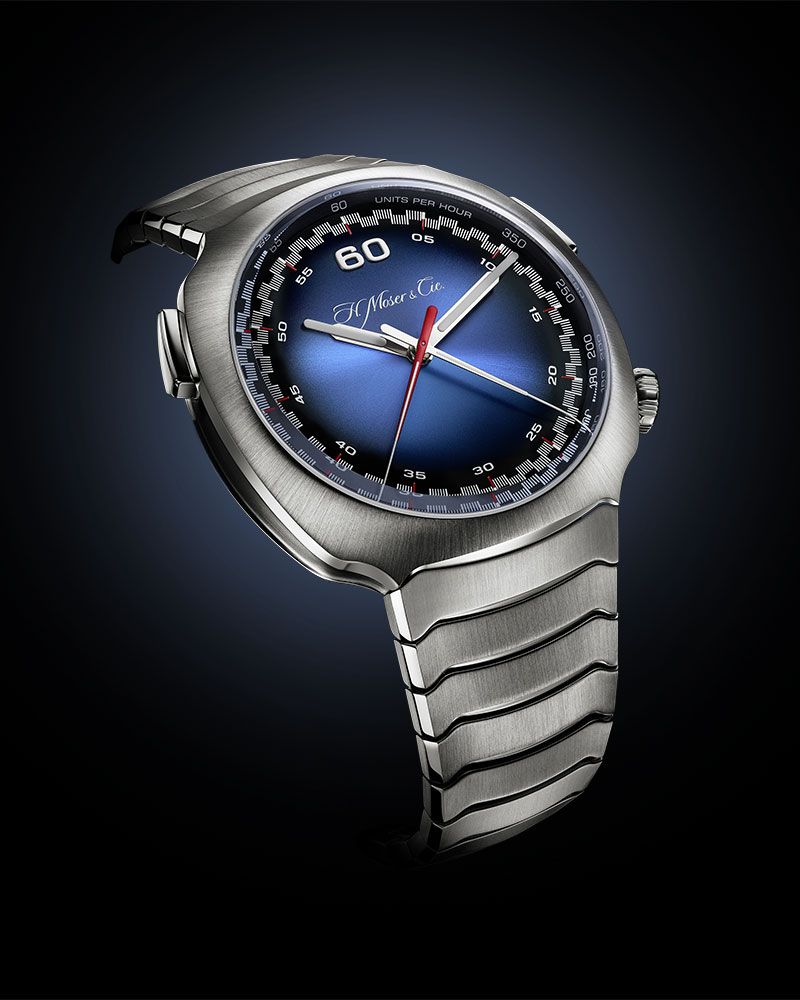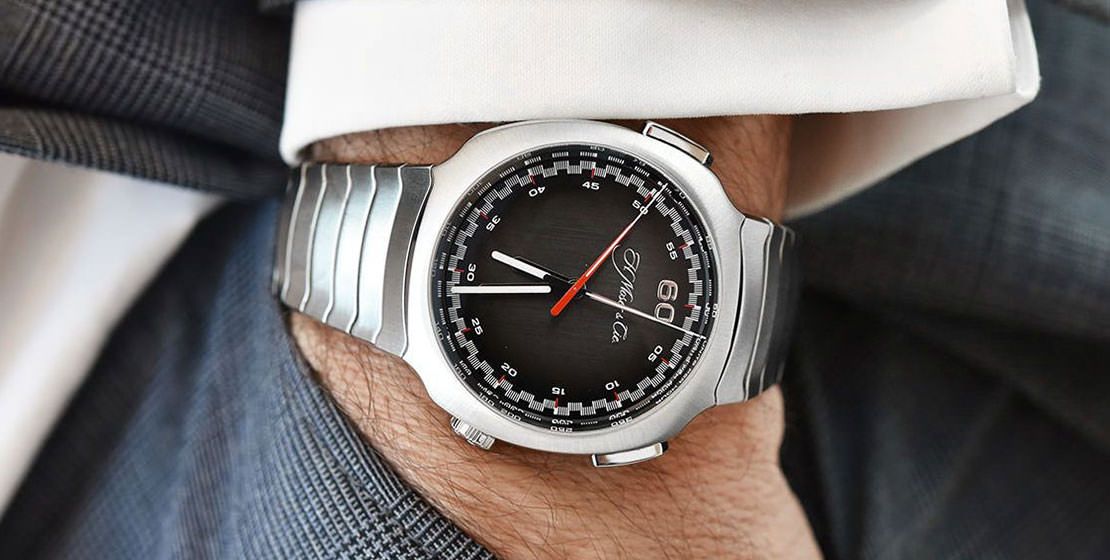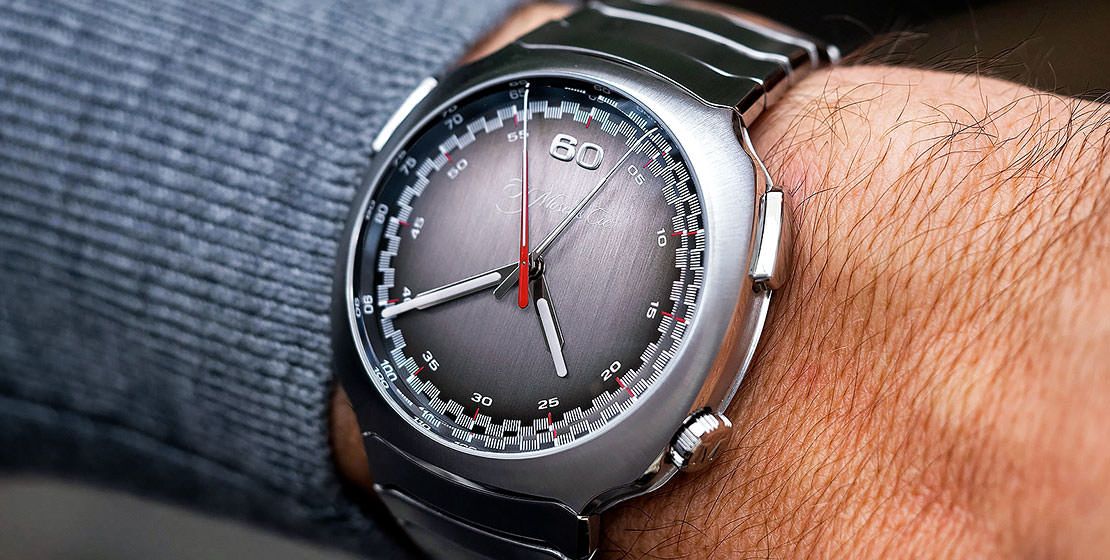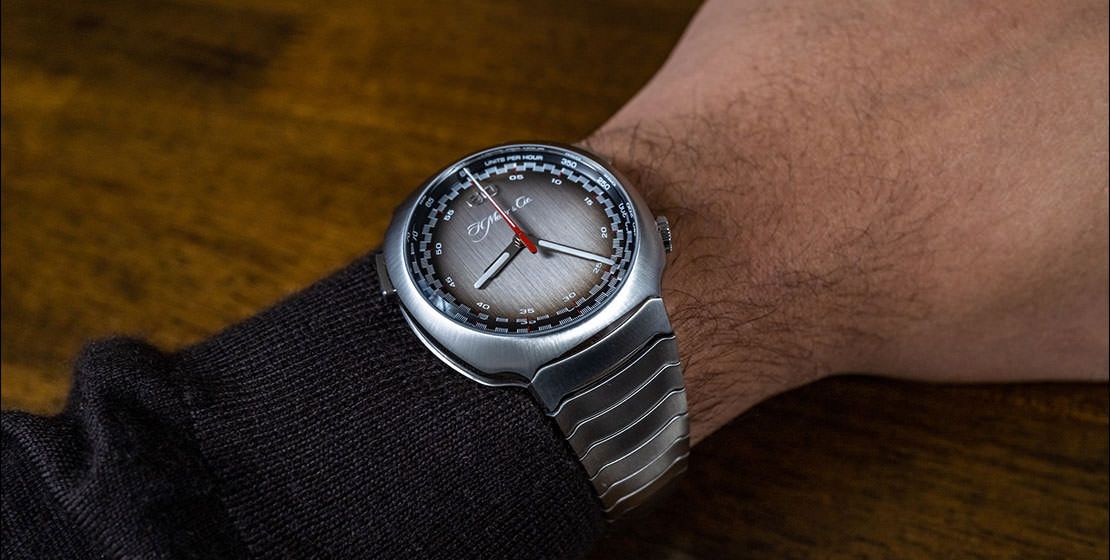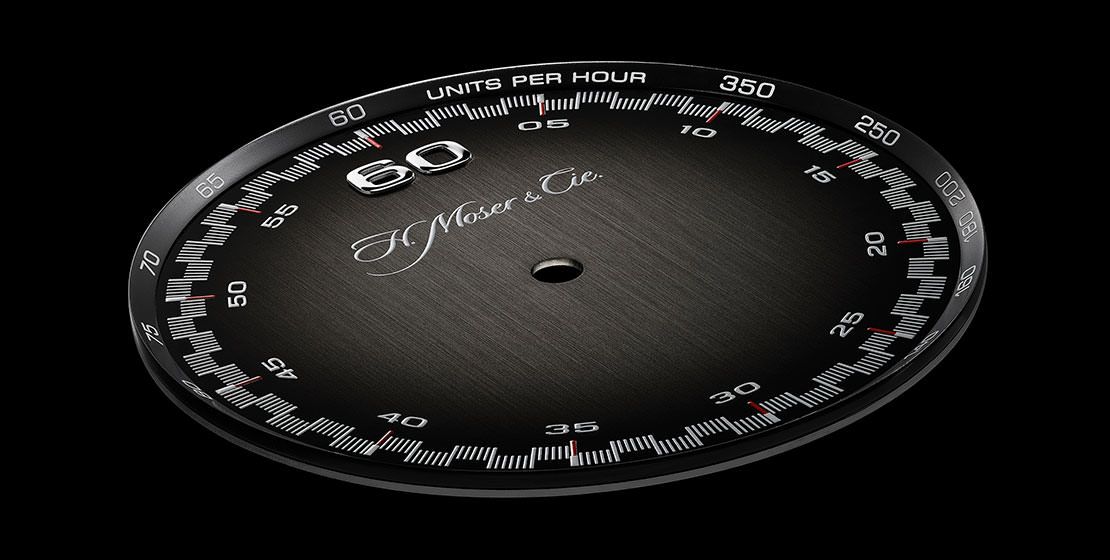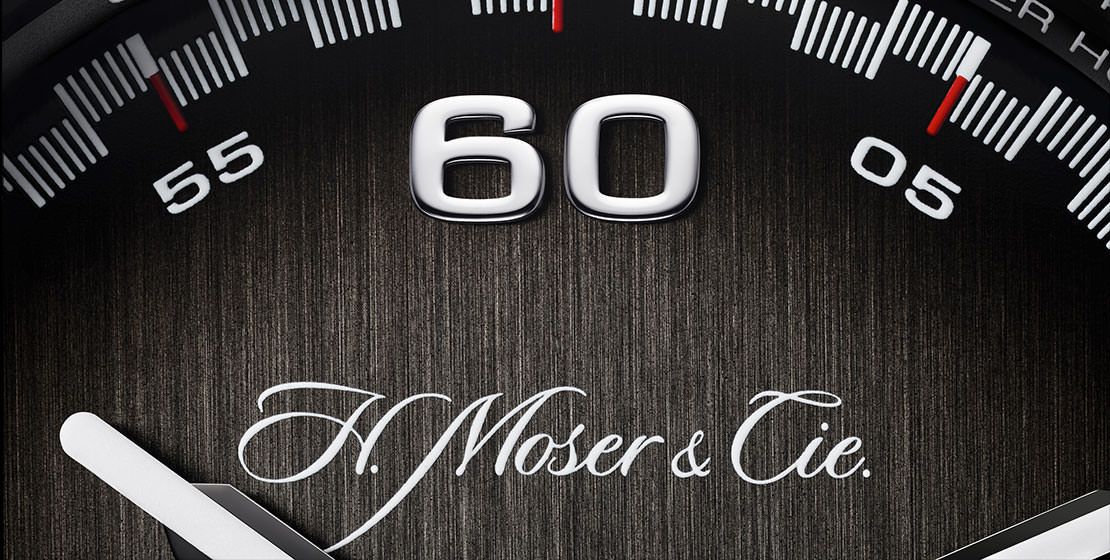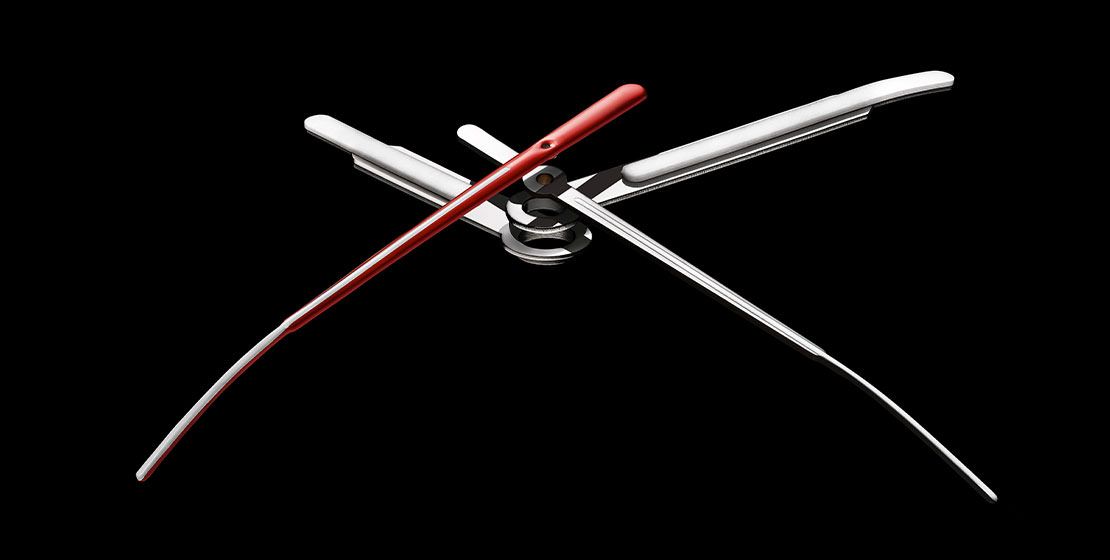ReviewA Stroke Of Streamlined Genius: The GPHG-winning H. Moser & Cie. Streamliner Flyback Chronograph Automatic
A design powerhouse that also delivers technical innovation and efficiency, the H. Moser & Cie. Streamliner Flyback Chronograph Automatic defies the visual definition of a chronograph, along with other norms, all the while staying true to the brand’s watchmaking values. Find out how
May We Recommend
With a glance at the dial of the latest release from the house of H. Moser & Cie., you would certainly not think of it as a chronograph. With a peek at its movement through the transparent caseback, you wouldn’t think of it as an automatic watch either. So the name of the new Streamliner Flyback Chronograph Automatic might seem quite puzzling at first, but as you discover its details, it’ll all make perfect sense. These are the aspects of this brand new novelty that break new ground in timekeeping, and watchmaking itself.
While the absence of chronograph sub-dials and a visible winding rotor make the new Streamliner a unique and exciting piece by itself, the complete package makes this watch even more interesting. With an architecturally constructed case and a superior integrated bracelet—all in steel—this timepiece truly is a sight to behold. And, of course, the fact that it’s completely different from any of H. Moser’s other offerings elevates the value of this 100-piece limited edition even further.
In November 2020, the H. Moser & Cie. Streamliner Flyback Chronograph Automatic won a GPHG in the ‘chronograph prize’ category. The GPHGs—the Grand Prix d’Horlogerie de Genève—are considered to be the highest honour in watchmaking, much like the Academy Awards are for cinema.
An Idea To Express
It all started with the objective of creating a watch with an integrated bracelet, which perhaps came from an idea to make a completely different Moser. This is because a bracelet is a departure from Moser’s signature look. The vision was clear from the start—it had to be smooth, clean and fluid in form, with a finely streamlined silhouette. This took the team back to the revolutionary locomotive engineering and design of the Art Deco era, and the iconic streamliner trains from the 1920s and 30s. They knew immediately that the new watch they were creating would be called the Streamliner. And inspiration came in spades, as they began to dissect aspects of the high-speed trains’ construction. It was the 1936 Mercury streamliner in particular that drove the designing of the Streamliner watch and its bracelet integration, just like the Cartier Tank’s rectangular case and bracelet drew inspiration from the caterpillar tracks of military tanks.
Streamliner—Train To Watch
The Mercury, named after the Roman messenger god, was an American train of remarkable speed and innovative engineering that helped boost railway passenger traffic in America’s Midwest region in the 1930s. A turning point in railroad design, the Mercury was the first streamliner to be constructed as an integrated unit, with even the external pipes and aluminium trimmings made to reflect that. The rounded lines and aerodynamic curves of the train that helped its swiftness were what really informed not just the silhouette of the Streamliner watch, but even the sculpting of the elements, the design of the bracelet links, as well as the finishing on the metal. The strokes of the brushed finishing on the surfaces of the case and the links create an appearance of streamlined motion—glass and case first and bracelet straps trailing behind.
And then there are the polished surfaces that highlight the edges of the bracelet links as well as the nuanced bevelling of the 42.3mm cushion-shaped case, which is water resistant to 120m. It’s a treat to see, really. The smooth lines of the case and wave pattern of the bracelet make for a really harmonious appearance, with the glistening effect of the polished surfaces. With no abrupt edges and with nothing out of place, even the raised and chamfered sapphire crystal glass seems integrated into the sculpted piece. And finishing the silhouette is the crown at four o’clock, along with the shapely chronograph push-pieces at 10 and two o’clock—not quite unlike what one might see in a traditional stopwatch.
Moser Minimalism Maintained
The chronograph in the Streamliner is of the superior flyback variety, which means that to stop, reset and restart the chronograph counter, you need only to press the push-piece once. Yet, it’s not the highlight of the complication in this timepiece. The unprecedented display does away with chronograph sub-dials, retaining all the stopwatch action at the centre—in keeping with Moser’s undying quest for minimalism. “We preferred understatement, ergonomics, and legibility, opting for a central display with no sub-dial: perfectly matching our minimalist philosophy,” elaborates Edouard Meylan, H. Moser’s CEO. “We took the very essence of the chronograph, and raised it to the next level,” he adds. With the chronograph hands at the centre, in red for seconds and steel grey for minutes, this effectively becomes a 60-minute chronograph—a shift from the norm of 30 minutes and 12 hours.
Excellent Legibility, Hands Down
The chronograph hands are accompanied by the main timekeeping hands for hours and minutes, the latter of which is curved downwards at the tip, lending additional dimension to the visual impact of the watch. What makes these hands particularly interesting though is the use of Globolight—a ceramic-based material that features Super-LumiNova—which hasn’t been used in watch hands before. Even the unconventional realisation of the baton shape makes these hands quite unique.

All this is set on a black fumé dial, with a vertical brushed texture. The chapter ring for minute markers does make this display look very similar to Omega’s ‘racing dial’, most prominently seen in the Omega Speedmaster Mark II Racing, especially with the red markers and the tachymeter scale surrounding it. Yet, Moser makes it its own, with minute numerals, including a large, applied 60-minute marker. This detail adds to the brand’s idea of putting the chronograph first. “The Streamliner is a chronograph, which displays the time, rather than a watch that features a chronograph,” Meylan explains.
Hidden Power, Strong Reserve
The movement powering this offbeat chronograph—the HMC 902, developed in collaboration with independent watchmaking entity AGENHOR—has been constructed to ensure a complete, unobstructed view of itself and its decoration, including the perlage and Côtes de Genève finishing. A first in watchmaking, the oscillating mass that winds the mainspring has been moved from just behind the caseback, to the space between the back of the dial and the movement.
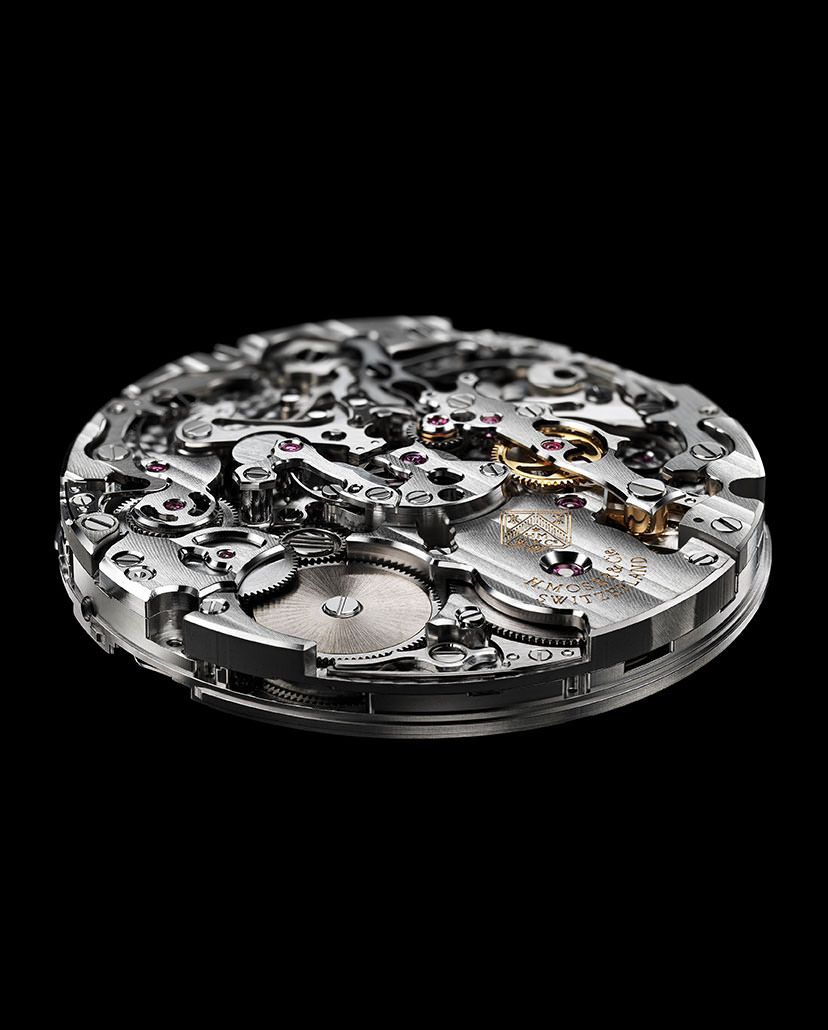
For those who like to see the oscillation of the rotor as an integral moving part of an automatic calibre, this innovation can be a bit of a disappointment—which wouldn’t have been the case had they innovated with a peripheral rotor instead. Though the unhindered view of the calibre does make a little quirk more apparent—the presence of a ‘Batman’ silhouette, which Meylan pointed out on Instagram. All said and done, you can rest assured that the accuracy and efficiency of this calibre have not been compromised. Running at a frequency of 21,600vph, it guarantees a power reserve of 54 hours when fully wound.
Moreover, this is an integrated chronograph movement, which means the chronograph components are integrated into the base calibre, as opposed to mounted as a separate module. An integrated chronograph is more stable, and is even less complicated to service. Additionally, the two-stage chronograph mechanism includes a horizontal clutch that has a friction wheel, and a smooth wheel that is equipped with micro-teeth. This avoids the inter-meshing of gears, which in turn, minimises accidental jumps when the chronograph is triggered.
It might seem counterintuitive for the watchmaker to take such a left turn from their established signature look, especially if you consider the fact that the segment of steel sports watches is already so crowded. Even though this watch may be a complete departure from H. Moser’s dress watches and ‘Concept’ dials, it also is a complete departure from regular steel sports watches or chronographs. Sleek, streamlined and innovative, this watch exemplifies the basic principles of H. Moser & Cie. even if they are interpreted in an offbeat manner. When I interviewed Meylan a few months ago, he had teased us about their upcoming novelties. “Next year we have some amazing new products. We’re introducing a new line,” he’d informed. “I cannot say too much about it at this time. But let’s just say it will be very different from what we’ve been doing.” We now know exactly what he meant.


